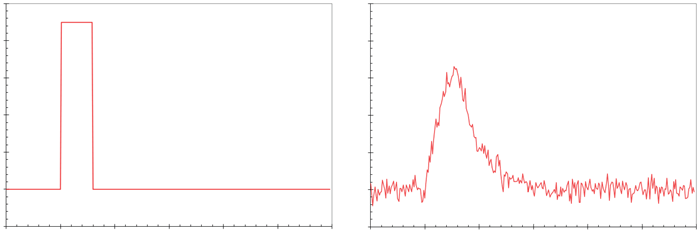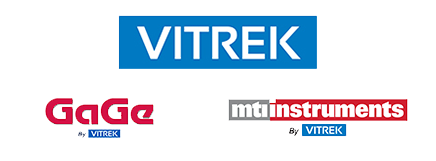Sponsored by Vitrek, LLCReviewed by Maria OsipovaSep 18 2025
This article demonstrates how a data link manufacturer tests signal integrity at the production level using GaGe Instruments' PC-based high-speed data capture digitizers.
Data Link Device Testing
The data link device under test (Figure 1) is characterized by comparing test signals sent into the link with signals measured at the link output. The differences between these two test signals show that the link degraded during transmission.
The input and output test signals must be sampled at 1 GS/s (GigaSamples per Second) with a minimum vertical resolution of 14 bits. Both signals must be continually recorded for anywhere from a few seconds to several minutes.

Figure 1. Two test platforms (PCIe and PXIe, respectively) transmit and receive the data link test signals. GaGe RazorMax high-speed data acquisition cards record the data for signal integrity comparison. Image Credit: Vitrek, LLC
The Test
The test setup uses two PC platforms to transmit and receive data, each utilizing a separate protocol: PCI Express (PCIe) and PXI Express (PXIe).

Figure 2. The GaGe RazorMax data acquisition system is offered on both PCIe and PXIe platforms. Image Credit: Vitrek, LLC
To collect input and output link signals for its link characterization system, the company used two GaGe 16-bit digitizers: the RazorMax PCIe CSE 161G2 and the PXIe CSX161G2 (Figure 2).
The RazorMax provides the requisite 1 GS/s sampling rate as well as 16-bit vertical resolution, which exceeds the 14-bit requirement. The two RazorMax models share the identical GaGe digitizer hardware and just differ in their platforms (PCIe and PXIe).
As a result, the input and output signals (Fig 3a and 3b) used by the test platform software are derived from functionally identical RazorMax devices, which is the best technique to detect minor signal variations caused solely by transmission deterioration.

Figure 3. A GaGe PCIe digitizer captures the input signal (a) being sent to the data link while a GaGe PXIe digitizer captures the output signal (b). The signals are then compared utilizing analysis software. Image Credit: Vitrek, LLC
The RazorMax's 700 MHz analog input bandwidth and 1 GS/s sampling rate enable the characterization of data link signals at up to 500 MHz frequency.
The 4 GigaSample onboard RazorMax memory enables continuous signal capture for up to four seconds. For even longer periods of time, the user can stream RazorMax directly into PC RAM via the PCIe or PXIe interface before connecting to a fast storage drive system.
Results
The manufacturer first presented a prototype system based on GaGe's sophisticated turnkey software. A final C-based software program performs firm proprietary analysis on gathered signals and generates final connection characterisation measurements.
The customer was able to swiftly build a comprehensive high-performance link characterization system using GaGe's high-performance digitizer hardware, which has ultra-fast data transfer capabilities and a robust software library.

This information has been sourced, reviewed and adapted from materials provided by Vitrek, LLC.
For more information on this source, please visit Vitrek, LLC.